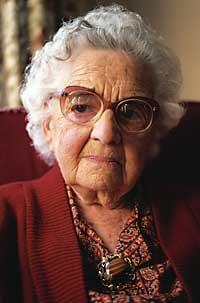New skin grafts for severely burned patients
2001/02/05 Galarraga Aiestaran, Ana - Elhuyar Zientzia
According to the project director, José Luis Jorcano, these five people have been replaced between 40 and 60% of the burned surface. This method has advantages over conventional systems. On the one hand, the skin that is transplanted to the patient is obtained from its cells and, on the other, the dermis can be restored in addition to the epidermis. In this way, some important cells are incorporated that until now were not implanted in transplants, including nerve endings and melanocytes.
This technique involves collecting and stretching undamaged skin parts so that once treated they remain like a mesh. In this way, the patient's superficial intervals are completed and, in addition, the patient should only remain hospitalized for three weeks.
Once the technique is developed, 95% of the skin of a burned person can be complemented with his skin. On the other hand, the therapeutic effects that can be obtained through genetic changes in transplanted skin are being experienced, such as strengthening or preventing the growth of blood vessels or accelerating hormone production related to certain types of diabetes.
One such example that will soon be likely in people is the treated skin to which the VHG gene has been added. This gene is the strongest factor that accelerates endothelial cell proliferation. This allows to create a vascular network under the skin of the transplanted patient, so it is of great interest for chronic ulcers and serious vascular problems.
Some of the objectives of the research center are the study of the factors causing cell death in blood pathologies such as leukemia and cutaneous genetic therapy.

Gai honi buruzko eduki gehiago
Elhuyarrek garatutako teknologia





